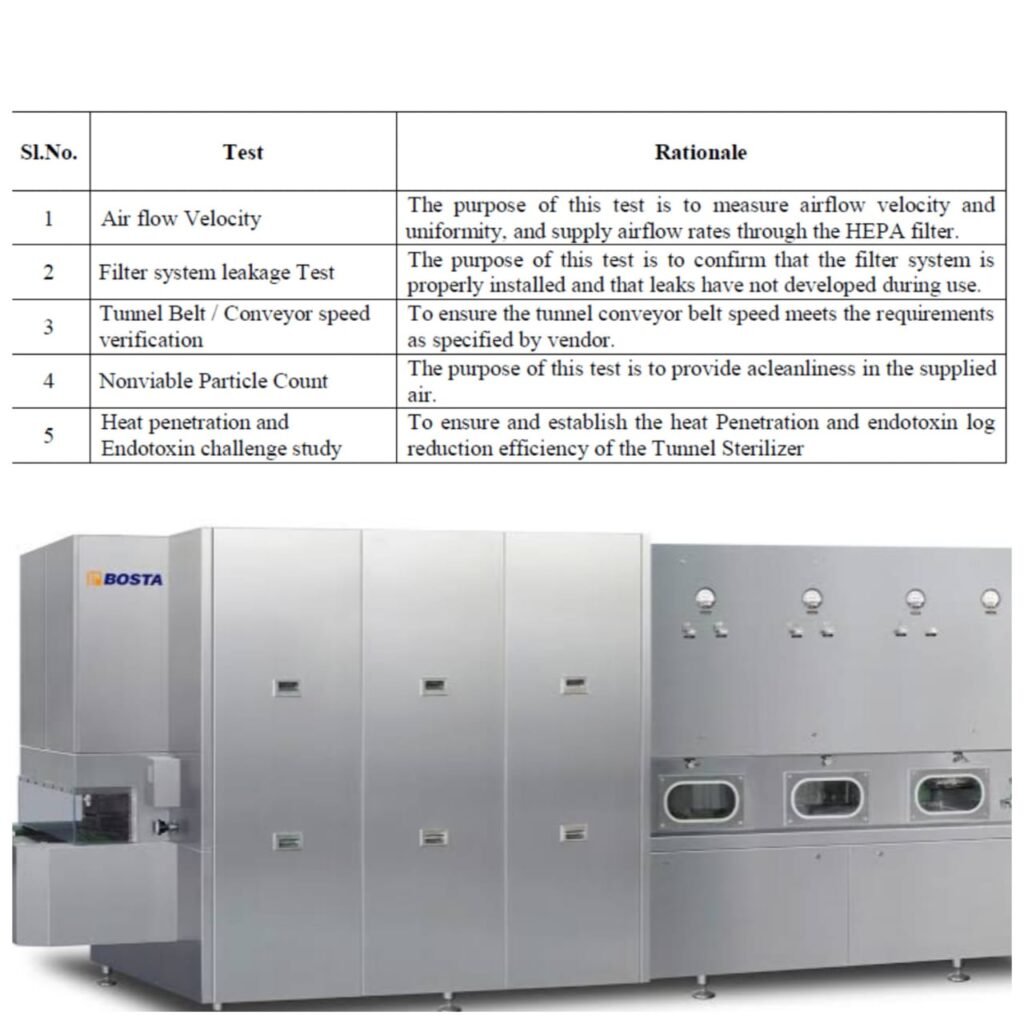
Tunnel Qualification
The sterilization process in a chamber or a hot air tunnel is critical, and regular validation is required.
Validation is defined as the documented procedure of obtaining, recording and interpreting results to ensure that the dry heat sterilization process has been consistently effective.
To qualify such devices, various pharmacopoeias require depyrogenation devices to be periodically challenged with high levels of bacterial endotoxin.
Although the pharmacopoeias state the acceptance criteria, little consideration is given to the practical approach.
1.DQ Design Qualification means showing that a piece of technology – a device, apparatus, machine or system – has a GMP-compliant design.
2.IQ Installation Qualification means showing it is set up, connected and installed as planned.
3.OQ Operational Qualification means showing it works as intended in all respects
4.Performance Qualification (PQ) is the final step of qualifying equipment.
In this phase, the qualification and validation team verifies and documents that the user requirements are verified as being met
To ensure that heat is sufficiently penetrating into the inner most portion of the vial subjected for sterilization and depyrogenation to achieve desired temperature during the sterilization and depyrogenation cycle.
The recovery of endotoxin concentration after exposing to depyrogenation tunnel should show more than 3 log reduction.
Get 9 of 10 spiked vial with 10,000 EU/vial of bacterial endotoxin from microbiology.
Place minimum 10 number of probes, one probe each inside the endotoxin spiked 8 vials and 3 without spiked vials at the junction of the bottom of the container and side wall.
The containers inner surface should be in contact with the probe because for sterilization and depyrogenation of the inner walls of the container as well as inner space.
Tie the probes firmly with the vial and place these vial inside the washed vial load.
Use zig to hold the spiked vials containing probes in place, as vial travel through the tunnel.
Set the temperature/cycle condition as per set parameter.
Record the set parameter for the sterilization cycle operated during test.
Operate the tunnel and pass the endotoxin spiked vials along with the washed vials as per SOP and start the data logger to record the actual temperature inside within the
sterilization zone
Acceptance Criteria
All temperature measured in the chamber is ≥ 3000C.
The recovery of endotoxin concentration after in sterilization and depyrogenation should at least 3 log reductions
Conclusion
Depyrogenation forms part of a critical process in many pharmaceutical production facilities,
particularly where glass vials and bottles are required for aseptic filling operations.
The number of validation runs is commonly set at three in order to demonstrate reproducibility, but this number is not fixed.
The frequency of re-validation is to be determined by the user based on risk assessment.
